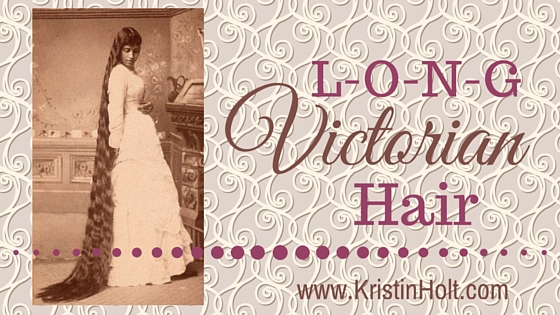
by Kristin Holt | Jul 27, 2017 | Articles
Hires Root Beer, from its debut in the mid-1870s, was sold as a refreshing beverage (with no medicinal expectations). The name, chosen by Charles H. Hires, to appeal to tough coal miners, who’d never find “root tea” attractive, ended up causing Hires Co. a bit of trouble with Women’s Christian Temperance Union (WCTU). Who knew that “beer” in a name, and the common knowledge that root beer extract was percolated with alcohol (though the finished drink had no more than a whole loaf of homemade bread), to cause banning of the beverage?

by Kristin Holt | Apr 21, 2016 | Articles
Victorian Era Women seldom trimmed their hair, allowing it to grow to incredible lengths. As styled, it often wrapped high in coiffures of twists, curls, braids, loops, pompadours, buns, knots, and more. Once you see the tremendous lengths of photographed ladies’ hair, you’ll understand why women (from the moment they cast off short dresses of girlhood) wore their hair up. It’s no surprise commercially prepared products catered to a woman’s desire to grow her hair to great lengths.

by Kristin Holt | Apr 3, 2016 | Articles
Whether referred to as “Correspondence Courtship” or “Epistolary Courtship”, part of the natural course of 19th century courting included letter-writing. Victorian-era couples could express tender sentiments in letters more easily (often) than in person. Many couples didn’t have the opportunity to spend time together, face-to-face, for too many miles separated them. Coming to know one another, and fall in love, through letter-writing was a standard practice. Results varied from blissful conjugal felicity (a frequently used term of the American Victorian era) to sensational disasters.
Interestingly enough, the term “Correspondence Courtship” (or very similar phrasing) appeared much more frequently and earlier than did the phrase “Mail-Order Bride”.











